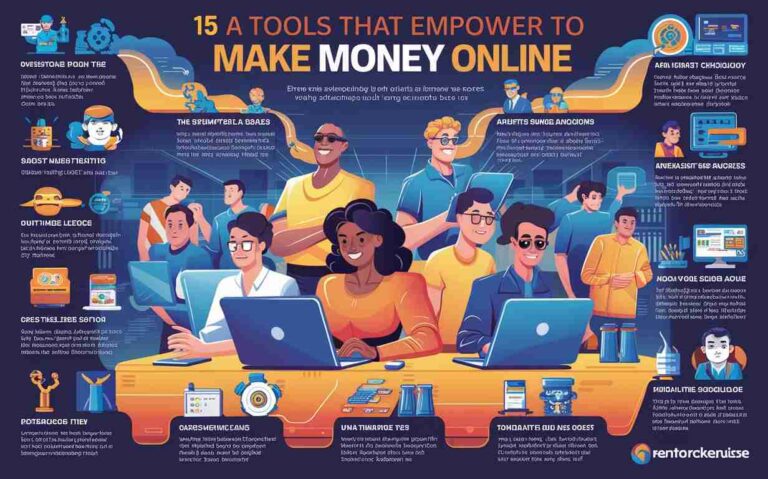The Rise of the Digital Nomad Lifestyle

Like many professionals, the past two years of pandemic-driven remote work opened my eyes to office life. The flexibility to live anywhere with an internet connection proved both liberating and challenging. Without a separation between work and personal time, days blur together. I sorely missed casual social connections missing from video calls. Yet not commuting daily or rushing home to meet obligations felt less stressful overall.
As companies delay or shrink return-to-office plans due to employee demands, remote work seems here to stay as a permanent fixture offering expanded lifestyle choices. And for some subset of wanderlust knowledge workers no longer location-constrained, the promise of traveling while working summons dreams of becoming a digital nomad.
Global data show interest in nomadic living amongst location-independent professions skyrocketed during peak COVID lockdowns. Remote job listings spiked across platforms as decentralized teams became normalized. Now as borders reopen, the opportunity to combine work and wandering from dream trip locations revives allure for those with flexible schedules.
But questions and obstacles remain about the practical every day realities beyond glorified visions of laptopping from exotic beaches. What’s nomad life actually like for those who’ve embraced the path?
Who Are Digital Nomads?
The remote worker label covers a spectrum. Some just shifted home offices to avoid commutes but maintain regular hours and local roots. However digital nomads represent more extreme decentralization – combining work and extended travel spanning countries and regions instead of a fixed base.
Common nomadic professions allowing constant mobility include software developers, digital marketers, teachers, graphic designers, travel bloggers, and consultants. Equipped with mobile devices and reliable internet, their work can be performed from anywhere without disruption.
Demographic data indicates most nomads range from the mid-20s to late-30s – either single/unattached or adventurous couples willing to trade stability for experiences in peak career-building years. Some may alternately base up for a few months between trips. The unifying element centers on freedom of movement.
gaps year students sampling the lifestyle before career commitments. However, many view nomadism as multi-year or indefinite arrangements. The appeal for those who take the leap owes to profound discontent with traditional living.
Why Choose Nomadism?
Motivations vary across those adopting unrooted living:
- Wanderlust – Some nomads just desire immersive cultural experiences unavailable as short holiday vacations. Spending meaningful time absorbing distant places offers an aspirational dream.
- Lifestyle Design – Others seek relief from high-stress environments or social constraints of traditional career tracks by taking control of how they spend days. Geography multiplying options represent the ultimate flexibility.
- Financial Optimization – Significant savings on housing/living costs stretch budgets dramatically. And some entrepreneurs even target tax efficiencies based temporarily in low-regulation countries.
- Adventure – Trading the mundane for exotic locales and spontaneity speaks to innate human curiosity. Discovering the joy of unknown futures matters more than paths already traveled for nomads.
Of course, pragmatists point out that digital vagabond aspirations often gloss over harsh realities…
The Realities of Constant Travel
The romantic visions of waking up daily in inspiring destinations often publicized paint just one dimension of nomadic living. The perpetual traveler lifestyle also comes bundled with significant practical challenges including:
- Social Isolation – Constant relocation precludes community bonds and trust developed through shared history. Shallow temporary connections may start feeling empty.
- Physical Fatigue – Hopping crowded trains or riding questionable buses for long hauls inevitably wears down bodies over time. And sleep disruptions/inconsistencies tax health.
- Mental Drain – Adapting to unfamiliar colonies and cultures never stops. Language barriers and logistics headaches creep into days. Decision fatigue follows.
- Financial Insecurity – Irregular client payouts or surprise trip expenses can quickly wreck budgets without safety net reserves or supplemental income. And lean savings worsen with age.
- Career Instability – Taking off for months or years at a time leaves holes in resumes. And keeping skills marketable gets harder as industries move on. Reentry struggles are real.
- Legal Constraints – Tax laws, visa terms, and local restrictions often limit or complicate extended stays as a foreigner. And crossing borders constantly bears hassles.
Jumping beyond society’s norms looks exciting but contains tradeoffs. Stories celebrating liberation usually lack counterpoints about isolation, uncertainty, and sustainability.
An Uncertain Future Movement
The digital nomad proposition clearly tempts restless knowledge workers to feel trapped locally. Pioneers embracing distributed work options show that global mobility works for some. Early participants mostly skew younger or unattached. But the concept remains largely unproven as a serious indefinite lifestyle across profiles.
As remote work flexibility spreads while travel rebounds post-pandemic, this segment promises growth. However, questions loom about longevity and infrastructure scaling to support peripatetic masses. Can public policy and corporate mindsets adjust? Will technology and modern sensibilities keep enabling rather than constraining the model as outliers redefine career and community norms?
Much remains fluid and risky guessing beyond the short horizon. But I’ll confess the adventure tugs at me as well. Those sharing glimpses from distant journeys demonstrate the art of questioning the status quo and manifesting alternatives centered on autonomy and wonder rather than templates and safety. A little terrifying perhaps, but that’s the tradeoff for briefly feeling alive in the wider world before eventually rerouting home.
Read More:



